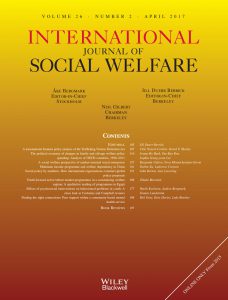Rosie O'Donnell Reminds Us About Women's Heart Health
Last week, media sources reported that Rosie O’Donnell had a heart attack. Though Rosie explained that she did “google” her symptoms, she did not believe she was having a heart attack and never called 911. Like many women, Rosie explained that she did not know enough about female heart issues, specifically identifying the problem and getting immediate medical attention. Rosie hopes she can use her fame and platform to raise awareness about heart attacks and issues in women.
While Rosie lived to tell her story, many women don’t. Researchers estimate that 1 in 4 women in the United States die of heart diseases every year. And, like Rosie mentions, many women don’t know their suffering from a heart attack until it is too late. Many of us know the ways in which heart attacks appear in men: pain in the left arm, pains in the chest. But studies suggest that women may not have the benefit of these tell-tale signs. Notably, women are less likely to present with chest pains when suffering a heart attack. If heart diseases are common in women, why do so many women lack potentially lifesaving knowledge about the signs and symptoms of a heart attack?
At least part of the answer is historical. There was a time when women’s cardiovascular health was understudied and even ignored by some in the medical community. In the late 1980s, feminists in and around the field of medicine demonstrated that our knowledge about certain health issues emerged from research on the male body. For example, several studies on blood pressure, heart issues, and the “normal” functions of human aging were based almost exclusively on findings from the male population. Now, medical researchers recognize the importance of studying these same issues in the female population, but still, the research for women is years behind that of men.
Though the medical community now recognizes the importance of studying a broader spectrum of diseases in women, it seems that when we think of “women’s health,” we think about issues specific to the female anatomy. Though women may be afflicted with other major medical concerns, a huge amount of money and time is devoted to maintaining the healthy development and stability of the distinctively “female” parts of the body. Organizations, like Susan G. Komen for the Cure, draw substantial resources to find a cure for breast cancer. Pharmaceutical companies develop vaccines, like Gardasil, targeted at preventing cervical cancer. Physicians and gynecologists recommend that women have their breasts and reproductive organs examined every year (though some have loosened up on this recommended frequency). Yet, heart disease, one of the largest “killers” of women, gets one day of awareness, Wear Red Day.
Don’t get me wrong. All of these developments are good for women. The emphasis on reproductive and breast issues has surely helped many women, who may have died from a disease of these organs or who wish to expand their reproductive options. But this obsession may have left other common problems unexamined and women without the resources or knowledge to combat them. The fact that many women do not know about the signs of a heart attack is evidence of this.
I don’t think that this should mean a decrease in research and outreach for women specific health issues. This needs to continue. Instead, we need an equal amount of research on other issues, as well as public health campaigns informing women of other risks to their health.
Suggested Readings:
Moore, Sarah E. H.2008. “Gender and the ‘New Paradigm’ of Health.” Sociology Compass 2(1): 268-280.
Bryder, L. 2008. “Debates about Cervical Screening: An Historical Overview.” Journal of Epidemiology Community Health 62: 284-287.
Morgen, Sandra. 2002. Into Our Own Hands: The Women’s Health Movement in the United States, 1960-1990. New Brunswick: Rutgers University Press.






1475-6781/asset/JSS.gif?v=1&s=377bb8e0c3d0fcf201f301ded7cf610142072c3e)
